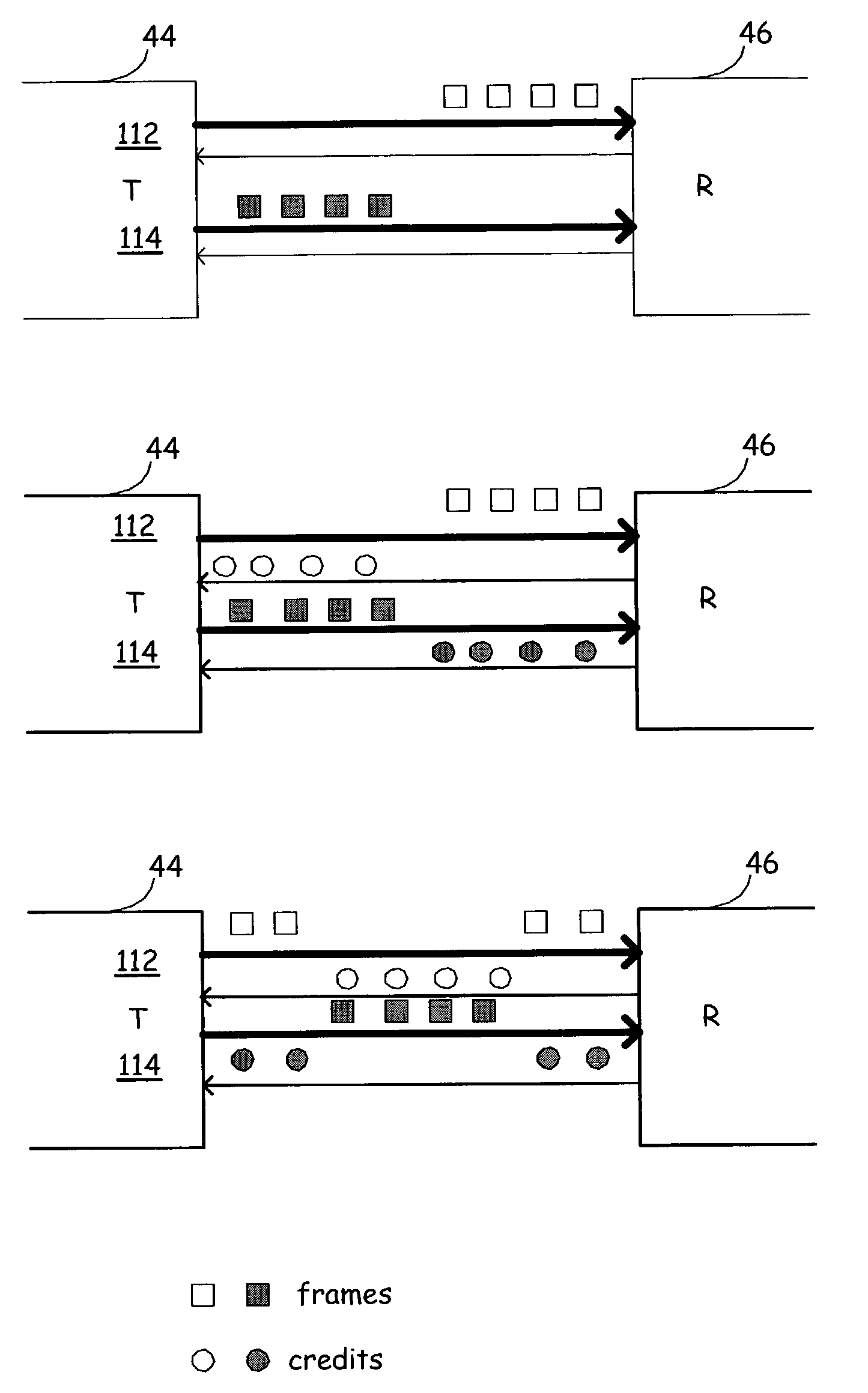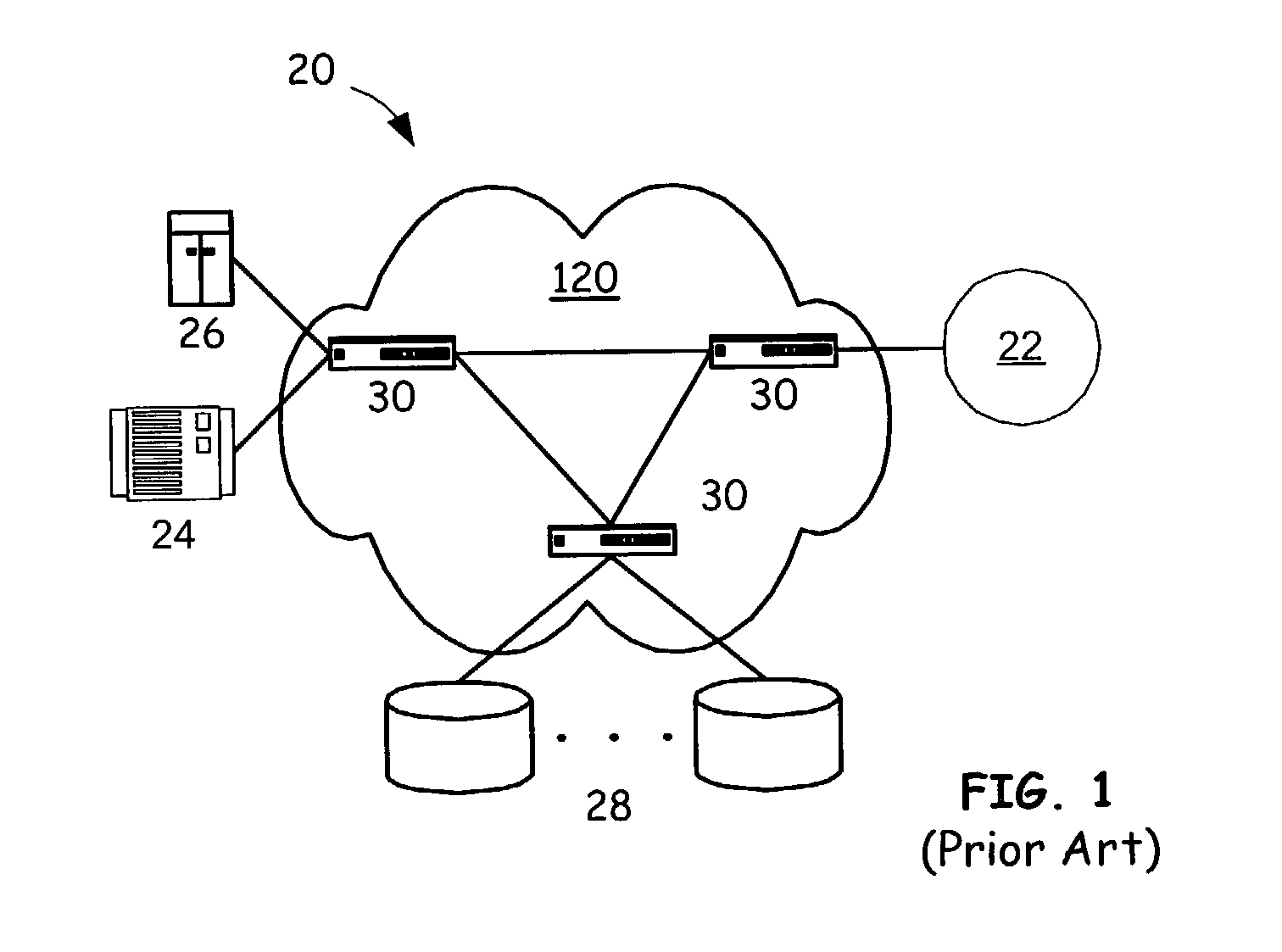Credit sharing for fibre channel links with multiple virtual channels
a technology of fibre channel links and credit sharing, applied in the field of network switching devices, can solve the problems of conflict, frame delivery, and still takes time for frames to move from one device to another, and achieve the effect of maximizing efficiency and throughput across an isl
- Summary
- Abstract
- Description
- Claims
- Application Information
AI Technical Summary
Benefits of technology
Problems solved by technology
Method used
Image
Examples
Embodiment Construction
[0026]FIG. 1 depicts a typical Storage Area Network (SAN) 20 utilizing a Fibre Channel network. A fabric 32 may comprise one or more switches 30. Three switches 30 are shown. Many devices or nodes, such as a general storage device 24, a server 26, database storage devices 28 and a loop 22 (itself comprised of devices, not shown) are connected to the fabric 32. Any devices on the fabric 32 can communicate to any other devices on the fabric 32.
[0027]FIG. 2 is a block diagram showing more details of several particular interconnections in a portion of a SAN 40. Two switches 72 and 74 are shown, together with two servers 52, 54 and two storage devices 62, 64. The N-ports 102, 104, 106 and 108 on storage devices 52 and 54, and servers 62 and 64, and their corresponding F-ports 66, 68, 76 and 78 on the switches 72 and 74 are linked by links 82, 84, 86 and 88. The two switches 72 and 74 have one E-port each, 44 and 46, which are connected through ISL 90. Each switch may also have a central ...
PUM
 Login to View More
Login to View More Abstract
Description
Claims
Application Information
 Login to View More
Login to View More - R&D
- Intellectual Property
- Life Sciences
- Materials
- Tech Scout
- Unparalleled Data Quality
- Higher Quality Content
- 60% Fewer Hallucinations
Browse by: Latest US Patents, China's latest patents, Technical Efficacy Thesaurus, Application Domain, Technology Topic, Popular Technical Reports.
© 2025 PatSnap. All rights reserved.Legal|Privacy policy|Modern Slavery Act Transparency Statement|Sitemap|About US| Contact US: help@patsnap.com



